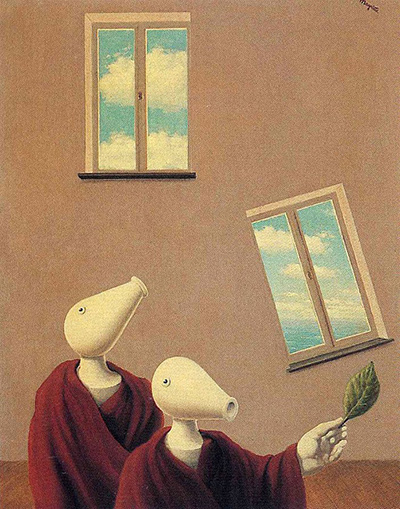Rene Magritte’s art works was aimed to make the viewer question their perception of normal objects and seemingly average scenes. He achieved this by placing the subjects of his paintings in unusual context and space.
The images in his works combined two or more elements to create something else entirely, allowing the observer a unique experience. He worked within the realm of surrealism.
In his Natural Encounters painting completed in 1945, the viewer’s experience is altered in a strange way by the unusual subjects depicted within the room. The soft violet tone is the dominant colour and it becomes progressively deeper and warmer as it nears the floor in the room by the two mannequin-like beings. A strange perspective is created by the absence of converging lines at the chest of the mannequins. This effect makes it so that the viewer cannot properly judge the dimensions of the room.
The perspective of the two windows creates another strange perspective as the left window looks like it is viewed from the right while the right hand window looks like it is being viewed from the left even though both windows are too close for that to be true. The window on the right is also slanted. It is made even more apparent by the horizon and clouds that can be seen through it. The outside as viewed through the windows and the mannequins are the only objects that seem to place the image in the normal third dimension.
The painting creates a world that is labile and insecure. The real world that is just outside is isolated in this image and only seen normally through the left window. Therefore, the experience of the painting is not between the viewer and the strange mannequins but rather the inner and outer worlds. Magritte gives the observer the opportunity to be illuminated by descending deeply into oneself through the meeting of these two worlds.




